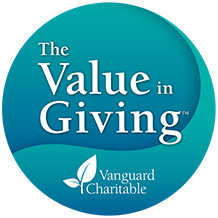 Season 3 Episodes
Season 3 Episodes
25 Years of Impact: Generosity, Growth, and Giving Back (Part 1)
To launch our third season of “The Value in Giving” podcast, Vanguard Charitable invites you to join us in celebrating our 25th anniversary. In this episode, discover the captivating story of Martha's Vineyard Museum. Join us as we explore what’s changed since that first grant, how they continue to evolve, and the role different granting sources play in helping the museum advance its mission. Heather Seger, Executive Director of Martha's Vineyard Museum, shares how they transformed from a historical society collecting artifacts for 75 years to a leader in diversity and inclusion that showcases the stories of immigrants to the island.
Episode Guest
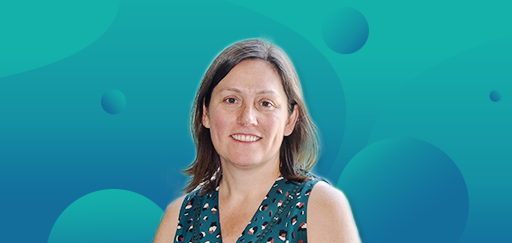
Heather Seger
Heather Seger is Executive Director of Martha’s Vineyard Museum (MVM). Martha’s Vineyard Museum is a century-old historical and cultural museum that collects art, artifacts, oral histories, documents, and photographs that help tell the stories of Martha’s Vineyard from time immemorial to the present.
25 Years of Impact: Generosity, Growth, and Giving Back (Part 2)
In the second part of our 25th anniversary series, hear how Shelter House in Northern Virginia and San Francisco-Marin Food Bank in California have grown since that first grant, how they continue to evolve, and how unrestricted giving helps further their missions to end homelessness and hunger in their communities. Learn about the incredible impact donors have with giving unrestricted funding and how donors can build trust and support organizations like Shelter House and San Francisco-Marin Food Bank.
Episode Guests
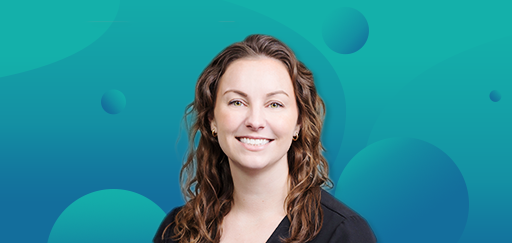
Dani Colón
Dani Colón is Chief Executive Strategist of Shelter House. Shelter House is a community-based, non-profit organization that provides crisis intervention, safe housing, and supportive services to neighbors experiencing homelessness and victims of domestic violence in Northern Virginia. They’re searchable in our Nonprofit Aid Visualizer nonprofit identifier tool, also called NAVi for hunger and homelessness.
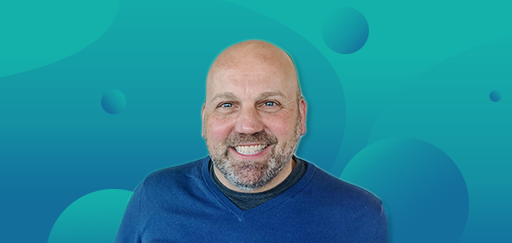
Chris Padula
Chris Padula is Chief Philanthropy & Engagement Officer of the San Francisco-Marin Food Bank. The SF-Marin Food Bank, whose mission is to end hunger in San Francisco and Marin, distributes one million meals every week to 53 thousand households. They’re also searchable in NAVi for hunger and homelessness.
The Value in Unrestricted Giving
The podcast highlights the unique approach that donors can take to make an impact on organizations like Habitat for Humanity, and how flexibility in giving is essential for organizations to fulfill their missions. Don’t miss out on this week’s episode. Be sure to tune in to learn more!
Episode Guest
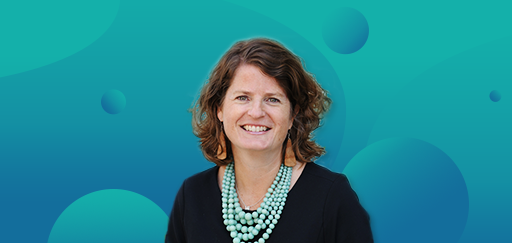
Corinne O'Connell
Corinne O'Connell is the Chief Executive Officer of Habitat for Humanity Philadelphia. Habitat for Humanity Philadelphia is an independently chartered affiliate of Habitat for Humanity International (HFHI), the largest nonprofit homebuilder worldwide. Since 1985, Habitat for Humanity Philadelphia has built or sold 246 affordable homes to first-time homeowners in Philadelphia, and strategically partnered with more than 600 families to make critical home repairs.
Corporate Giving with Aramark
In this episode of "The Value in Giving" podcast, Rebecca Moffett discusses strategic corporate giving with a donor-advised fund (DAF). Learn how a donor-advised fund has empowered their corporate giving efforts, amplifying their impact on causes aligned with their mission and benefiting thousands in need. Discover the key factors that make corporation-nonprofit partnerships successful in creating lasting positive change in communities. For donors, learn valuable advice on establishing impactful relationships with nonprofits for both immediate and long-term philanthropic outcomes.
Episode Guests
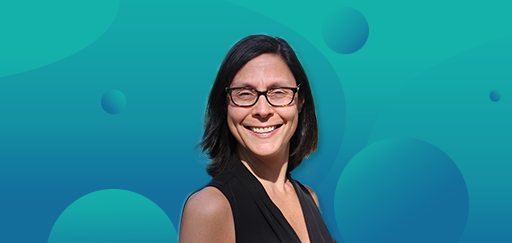
Jami Leveen
Jami Leveen is Vice President of Community Partnerships of Aramark. Aramark, a renowned Philadelphia-based company providing food, facilities, and uniform services worldwide, has entrusted Vanguard Charitable with its charitable giving for over 20 years. Get insights on Aramark's transformative volunteer experiences and fostering meaningful relationships with community organizations.
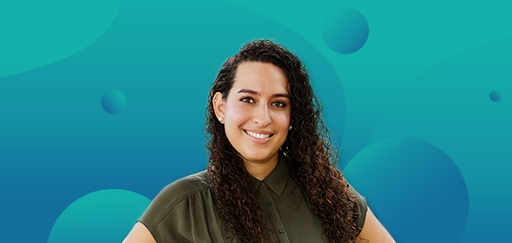
Julia Rivera
Julia Rivera is Chief External Affairs Officer of Congreso. Congreso is a nonprofit serving predominantly Latino neighborhoods. Julia reveals the impact of Aramark's support through DAF grants on their programs and initiatives.
The Value in Giving with GiveDirectly
Join Rebecca Moffett, President of Vanguard Charitable, in this episode of “The Value in Giving” podcast, as she discusses trust-based philanthropy and how unconditional cash transfers help those in extreme poverty, with GiveDirectly, a nonprofit organization based in East Africa, working towards aiding families living in extreme poverty. Learn more about the profound impact of the direct cash giving approach and how these transfers have led to a substantial positive impact on thousands of families and even reductions in domestic violence incidents. GiveDirectly’s mission shows how the transformative potential of comparatively small interventions in impoverished communities can have a significant impact on individual lives.
Episode Guest
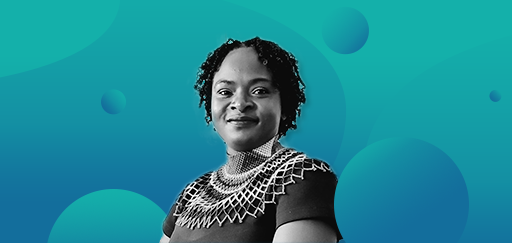
Caroline Teti
Caroline Teti is the Director of Recipient Advocacy for GiveDirectly. GiveDirectly is a nonprofit organization operating in East Africa that helps families living in extreme poverty by providing cash, giving them the autonomy to use it for their most urgent needs. These cash transfers can have the same critical impact on those in need as unrestricted grants have on nonprofits.
Recapping Season 3 of The Value in Giving
To recap Season 3 of The Value of Giving podcast, host Rebecca Moffett is joined by Elaine Kenig, Chief Communications Officer at Vanguard Charitable. This season we've interviewed incredible organizations such as Martha's Vineyard Museum, Shelter House, the San Francisco Marin Food Bank, Habitat for Humanity Philadelphia, Aramark, Congreso and GiveDirectly. In this final episode, we discuss the significance of trust and unrestricted giving, and we’ll offer guidance to donors on how to forge impactful partnerships with nonprofits and maximize their charitable giving in the near and long-term.
Episode Guest
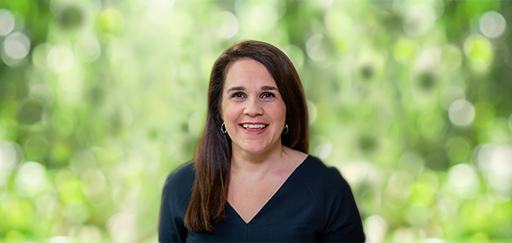
Elaine Kenig
In her role leading communications, analytics, and strategic planning, Elaine focuses on building awareness of the benefits of strategic philanthropy and improving donors' giving experiences. Elaine earned her bachelor's degree from Lehigh University and master’s in public administration from the University of Pennsylvania. She holds a Chartered Advisor in Philanthropy (CAP®) designation.
 Season 2 Episodes
Season 2 Episodes
What's Next in the Pandemic and Philanthropy - And How Donors Can Make an Impact (Part 1)
In Season 2’s first episode, Jane Greenfield, President Emeritus of Vanguard Charitable, kicks of the season by focusing on what's next in disaster relief and how donors can continue to make an impact. Joining the discussion is Patty McIlreavy, President and CEO of the Center for Disaster Philanthropy, and Janti Soeripto, President and CEO of Save the Children, US.
Episode Guests
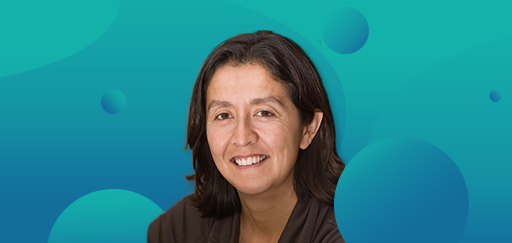
Janti Soeripto
Janti Soeripto is President & Chief Executive Officer of Save the Children US. She assumed this role in January 2020, after serving as President and Chief Operating Officer since May 2019. In this position, Janti had oversight for setting agency strategy, ensuring all parts of the organization were well managed, staffed and aligned and operated as effectively as possible.
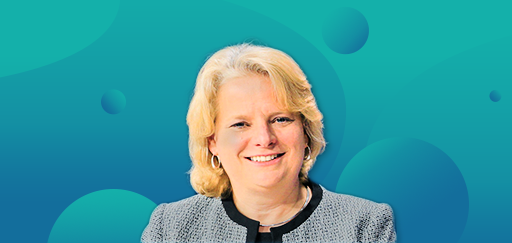
Patricia McIlreavy
Patricia McIlreavy is president and CEO of the Center for Disaster Philanthropy. Throughout her career, she has focused on improving the effectiveness and impact of the aid sector; she led the development of the InterAction CEO Pledge on the Prevention of Sexual Abuse, Exploitation, and Harassment of and by NGO Staff, signed by 126 CEOs upon its launch in 2018.
What's Next in the Pandemic and Philanthropy - And How Donors Can Make an Impact (Part 2)
In this episode, host Rebecca Moffett, President of Vanguard Charitable talks with Hannah Kemp, Vice President for Impact and Growth at Surgo Ventures about what's next in the pandemic and philanthropy and understanding how to strengthen our communities by using data. Co-hosting with Rebecca is Magda Guillen Swanson, who manages the research and development program at Vanguard Charitable and partnered with Surgo to develop the Nonprofit Aid Visualizer (NAVi) which helps donors connect with nonprofits in need that focus on particular issue areas.
Episode Guest

Hannah Kemp
As Vice President, Impact and Growth, Hannah oversees Surgo Ventures’ portfolio of partnerships, helping solve complex problems using data, AI, behavioral science, and systems thinking. She has more than a decade of experience working in public health and social impact having led projects related to strengthening health systems, HIV/AIDs, maternal and child health, reproductive health, and economic development in the U.S. and across low and middle income countries.
Maximizing Charitable Impact: The Importance of Aligning Investments
On Episode 3 of the Value in Giving Podcast, Rebecca Moffett, President of Vangaurd Charitable, is joined by Vanguard Charitable’s Chief Financial Officer Mark Froehlich to discuss how donors can maximize their charitable impact by aligning their investments with charitable values. Our speakers will share various considerations that donors should make about their investment strategy, discuss the importance of understanding the philosophy behind an investment, and provide recommendations on the best practices to reach investment goals. Specifically, this episode will elaborate on four key principles donors should consider: crafting clear goals, remaining balanced, minimizing costs, and maintaining long-term discipline. Rebecca and Mark will also offer information regarding Vanguard Charitable’s offerings, options, and resources that donors can utilize to enhance their investment strategies.
Episode Guest
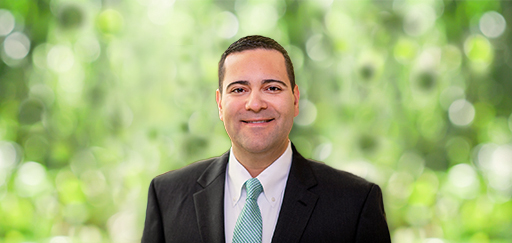
Mark Froehlich
Prior to Vanguard Charitable, Mark was the CFO of The Philadelphia Foundation. Mark is a CPA and holds an MBA from Temple University's Fox School of Business. Mark’s strong connection with the not-for-profit sector stems from his training as a classical violinist and his affinity for Philadelphia's arts organizations.
Maximizing Charitable Impact: Creative Giving Vehicles
In this episode, Host Rebecca Moffett is joined by Liz Sessler, Chief Operating Officer at CapShift to discuss how you can maximize your charitable impact with creative giving vehicles, such as recoverable grants. Liz and Rebecca discuss how recoverable grants are strategic philanthropic tools donors can use for impact investing through their donor-advised funds. This episode will detail how recoverable grants are different from traditional grants, three ways donors use recoverable grants, and tips for philanthropists who are looking to make an impact through recoverable grants.
Episode Guest
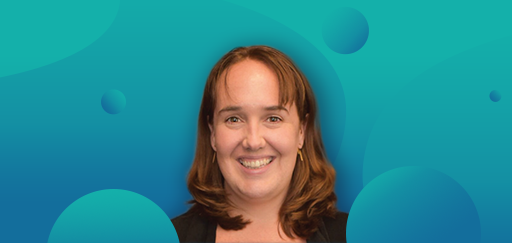
Liz Sessler
Liz leads development of CapShift technology and oversees the software development team. She co-founded and was senior vice president at ImpactUs Marketplace LLC where she oversaw client experience, business development, and marketing. As ImpactUs' director of innovation at Enterprise Community Partners, she launched the first retail investment product. Liz has a BA in Public Policy Analysis from University of North Carolina at Chapel Hill.
Maximizing Charitable Impact: Evaluating Charities that Align with the Impact You Want to Make
Host, Rebecca Moffett is joined by Jacob Harold, Executive Vice President at Candid to discuss different approaches to evaluating charitable organizations. With all of the available resources about nonprofits, what should donors look for? They discuss how donors can determine which resources are best for them and how to evaluate whether a nonprofit aligns with their own charitable purpose and goals.
Episode Guest
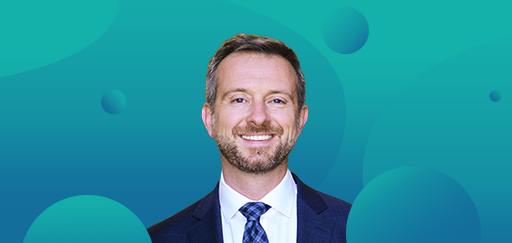
Jacob Harold
Jacob Herald is the Former CEO of GuideStar and Co-founder and former Executive Vice President of Candid. During his time at GuideStar, Harold oversaw a tripling of GuideStar’s reach, a new focus on programmatic data, and major partnerships with organizations ranging from Facebook to the Gates Foundation. Harold was named to the Nonprofit Times Power and Influence Top 50 from 2014-2020. He earned an AB summa cum laude from Duke University and an MBA from Stanford. Harold has further training from Green Corps, Bain, the Chinese Academy of Sciences/Santa Fe Institute, and SIT.
Recapping Season 2 of The Value of Giving
To recap Season 2 of the Value of Giving podcast, host Rebecca Moffett is joined by Elaine Kenig, Director of Communications and Strategy at Vanguard Charitable. This season we've interviewed incredible organizations such as Save the Children, Center for Disaster Philanthropy, Surgo Ventures, Capshift, and Candid; including our own Mark Froehlich, Chief Financial Officer at Vanguard Charitable. In this final episode, we discuss a few key things we’ve learned this season such as the importance of trust and unrestricted giving, how to leverage data to help drive solutions, and strategic approaches for maximizing charitable impact, including advice for donors.
Episode Guest
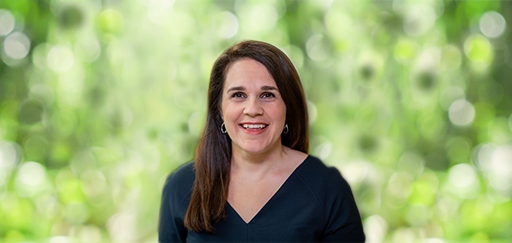
Elaine Kenig
In her role leading communications, analytics, and strategic planning, Elaine focuses on building awareness of the benefits of strategic philanthropy and improving donors' giving experiences. Elaine earned her bachelor's degree from Lehigh University and master’s in public administration from the University of Pennsylvania. She holds a Chartered Advisor in Philanthropy (CAP®) designation.
 Season 1 Episodes
Season 1 Episodes
Silicon Valley Community Foundation, Nicole Taylor
On Episode 1 of the Value in Giving podcast, Nicole Taylor, President and CEO of the Silicon Valley Community Foundation, speaks with Jane Greenfield about the importance of supporting COVID-19 relief efforts through philanthropy. Nicole shares more about how her background as a public school teacher inspired her to be an agent of change and how the Silicon Valley Community Foundation and its donors are working to alleviate the serious inequalities in our communities brought to light by COVID-19.
Episode Guest
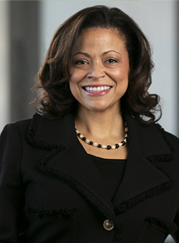
Nicole Taylor
Nicole Taylor is president and CEO of Silicon Valley Community Foundation. She brings together a rich background in Bay Area philanthropy, nonprofit administration and fundraising with extensive experience in both the private and public sectors.
In joining SVCF in December 2018, Nicole returns to the Bay Area from Arizona, where she served as vice president of the ASU Foundation. She also previously served as deputy vice president and dean of students at Arizona State University. Prior to her time at ASU, Nicole was the associate vice provost of student affairs and dean of community engagement and diversity at Stanford University, after serving as president and CEO of Thrive Foundation for Youth in Silicon Valley.
Nicole also spent more than 15 years with the East Bay Community Foundation, eventually serving as its president and CEO for six years. Nicole received both her M.A. in Education and A.B. in Human Biology from Stanford University, and she began her career as an educator in Oakland public schools. She served on the board of the Federal Reserve of San Francisco for six years and is currently a board member for Common Sense Media.
UNICEF USA, Michael Nyenhuis
On Episode 2 of the Value in Giving podcast, Michael Nyenhuis, President and CEO of UNICEF USA, speaks with Jane Greenfield about how his organization is supporting children around the world before, during and after the COVID-19 pandemic. As the newly appointed leader of the organization, Michael shares a bit about his philanthropic background and how one of America's most recognizable charities is fighting the Coronavirus by delivering needed medical supplies and educational solutions to those who need them most. To view the celebrity-filled, special event Michael references in the podcast, visit www.unicefwontstop.org.
 |  |
 Listen on Spotify Listen on Spotify |  Listen on YouTube Listen on YouTube |
Episode Guest
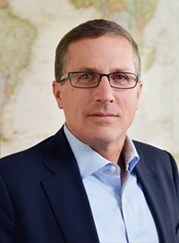
Michael Nyenhuis
Before becoming CEO of UNICEF USA in March 2020, Michael served as CEO of Americares since 2014. He also served as CEO of the global nonprofit MAP International for 13 years. A former journalist with a passion for global health, he previously served on USAID’s Advisory Committee on Voluntary Foreign Aid and chaired the board of the Integral Alliance, a global network of faith-based NGOs. He also currently serves on the board of InterAction, the largest coalition of U.S.-based relief and development organizations working internationally, and the leadership council at Concordia, an organization and forum that promotes cross-sector partnerships for social impact. A Minnesota native, Michael holds a Masters in Business Administration from Emory University and Bachelor of Arts in Urban Studies and Communications from University of Wisconsin Green Bay.
Bill & Melinda Gates Foundation, Victoria Vrana
On Episode 3 of the Value in Giving podcast, Victoria Vrana, Deputy Director of Policy, Systems and Giving by All at Bill & Melinda Gates Foundation, speaks with Jane Greenfield about the unique and critical role the Gates Foundation is playing in COVID-19 relief. Victoria shares insights from the front lines of the Gates Foundation’s role in COVID-19 treatment development, vaccine development, and health initiatives across the globe. Additionally, the two discuss how charitable organizations and individuals can give back during the world’s most critical time of need.
Episode Guest
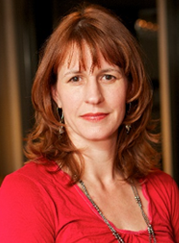
Victoria Vrana
Victoria Vrana is a Deputy Director on the Giving By All team and joined the Foundation in November 2011. Previously, she served as the vice president, communications and assessment at Venture Philanthropy Partners (VPP), responsible for the organization's overall internal and external communications and assessment of VPP and its portfolio's performance. She joined VPP as the chief knowledge officer in 2003. Since June 1999 she served as the director of interactive media for the Morino Institute. Before joining the institute, she was a senior account executive with Millennium Communications, a communication consulting firm serving nonprofits and foundations. Her interest in development and using communications and technology for social change began at the Network of East-West Women where she directed the first online network linking women in post-Soviet countries. Vrana studied in Germany and Hungary and has a degree in comparative literature from the University of California at Davis.
CDC Foundation, Dr. Judy Monroe
On Episode 4 of the Value in Giving podcast, Dr. Judy Monroe, President and CEO of the CDC Foundation, joins Vanguard Charitable President Jane Greenfield to talk about the critical role the CDC Foundation is playing in the fight against COVID-19 not just in the U.S. but around the globe. Monroe talks about what the CDC Foundation is doing now to support relief efforts and how today's work has been informed by the Foundation's fight against pandemics and epidemics in the past. Additionally, this discussion dives into who's donating (it's not just adults) and how to donate to an organization helping pave the way for a path back to a "new normal."
 |  |
 Listen on Spotify Listen on Spotify |  Listen on YouTube Listen on YouTube |
Episode Guest:
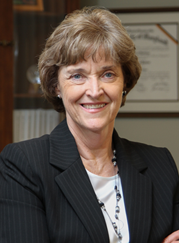
Dr. Judy Monroe
Dr. Judith Monroe, president and CEO of the CDC Foundation, has dedicated her career to protecting people and saving lives. She joined the CDC Foundation in February 2016 as president and CEO, following her role as a deputy director of CDC and director of CDC’s Office of State, Tribal, Local and Territorial Support. In her work at the CDC Foundation, Dr. Monroe advances priority programs that improve the health of people around the world and prepare other nations to better prevent, detect and respond to dangerous health threats, including the current COVID-19 pandemic. During her tenure as the state health commissioner for Indiana she served as president of the Association of State and Territorial Health Officials through the H1N1 pandemic. Dr. Monroe currently serves on the board of directors for the Center for Global Health Innovation and for the Georgia Global Health Alliance, and is a member of the Milken Institute’s Public Health Advisory Board. Additionally, she serves as a member of the World Health Organization Foundation’s Advisory group, as well as many national advisory committees and boards.
Feeding America, Casey Marsh
On Episode 5 of the Value in Giving podcast, Casey Marsh, Chief Development Officer of Feeding America, joins Vanguard Charitable President Jane Greenfield to discuss the invaluable role Feeding America is playing to help alleviate hunger during the COVID-19 pandemic. With increasingly more people battling what the organization calls "food insecurity," the need for charitable support in the world of hunger relief has arguably never been greater. On this podcast, Marsh talks about how hunger is often symptom of other societal inequalities and how COVID-19 has shown many Americans that hunger is not just an issue that affects families abroad but one that impacts millions here in the U.S.
 |  |
 Listen on Spotify Listen on Spotify |  Listen on YouTube Listen on YouTube |
Episode Guest:
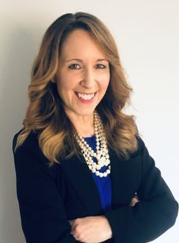
Casey Marsh
As Chief Development Officer, Casey Marsh serves as Feeding America’s lead fundraiser, strategist and ambassador to help advance the organization’s mission and strategic goals. Casey is focused on helping to grow revenue streams for integrated fundraising efforts by building strategic partnerships, cultivating donors and expanding markets. She also supports fundraising capacity-building across Feeding America’s network of 200 food banks.
Casey joined Feeding America from UNICEF USA, where she worked beginning in 2007 as Regional Managing Director for the Midwest and then as Vice President of Regions-West. In the latter, she oversaw five regional teams and boards across several states in raising awareness, funds and voices to help save and protect the world’s most vulnerable children. Her accomplishments included leading a team to raise resources from major gifts, corporations, foundations and special events, developing and executing an organizational strategic plan, leading key national partnerships, and building and developing boards.
In her role as Managing Director for the Midwest Region, Casey helped support UNICEF’s mission by engaging individuals in the Midwest. During this time, she led donor visits in Panama, Zambia, Mozambique, Montenegro and Jordan to advocate on behalf of the world’s children in Chicago and across the country.
Prior to joining UNICEF USA, Casey served on the Development team at the AIDS Foundation of Chicago from 2000 to 2007. She currently serves on the foundation’s Honorary Board of Directors.
Casey earned her Master of Science in Public Service Management at DePaul University in Chicago, where she focused her research on the psychology of giving. She also received her Bachelor of Arts in Marketing from Loyola University Maryland.
The Center for High Impact Philanthropy, Katherina Rosqueta
On Episode 6 of the Value in Giving podcast, Vanguard Charitable President Jane Greenfield welcomes Katherina "Kat" Rosqueta from The Center for High Impact Philanthropy (CHIP) at the University of Pennsylvania. On this podcast, the two discuss what exactly "high impact" philanthropy means and what role CHIP has in the battle against COVID-19. Rosqueta shares some tips to make the most of one's charitable donation and how the organization she started is delivering positive change.
Episode Guest:

Katherina Rosqueta
Katherina ‘Kat’ M. Rosqueta is the founding executive director of the Center for High Impact Philanthropy. Founded as a collaboration between the University of Pennsylvania’s School of Social Policy & Practice and alumni of the Wharton School, the Center for High Impact Philanthropy is the premier source of knowledge and education to help donors around the world do more good.
Before accepting her appointment to launch the Center, Kat was a consultant with McKinsey & Company; a consultant to the founding team of New Schools Venture Fund; founding director of Board Match Plus, a San Francisco program dedicated to strengthening nonprofit boards; and program manager of Wells Fargo’s Corporate Community Development Group.
She has held numerous civic leadership positions including board president of La Casa de las Madres (San Francisco’s oldest and largest shelter for battered women and their children), chair of the United Way’s Bay Area Week of Caring, and co-founder and executive committee member of the Women’s MBA Network. She currently serves on the board of Candid, the world’s largest source of information on nonprofits, and co-chairs Greenlight Fund Philadelphia, a venture philanthropy fund dedicated to addressing urgent social needs in Philadelphia.
Her work and comments have been cited in numerous publications including the New York Times, Slate, Money Magazine, and the Wall Street Journal. She speaks frequently on social impact management and philanthropy and has lectured at the Wharton Business School, Stanford Graduate School of Business, University of California Haas School of Business, and the University of San Francisco’s Institute for Nonprofit Organization Management.
Kat received her B.A. cum laude from Yale University, and an M.B.A. from The Wharton School of the University of Pennsylvania. She was the 2012 recipient of the Wharton Women in Business Kathleen McDonald Distinguished Alumna Award and a 2011 recipient of the Brava! Women Business Achievement Award. She and her husband Michael Idinopulos live in Philadelphia with their three children.
Recapping Season 1 of The Value in Giving
During the course of our first season of The Value in Giving podcast, we've been fortunate to speak to some incredible guests. They include leaders from the Silicon Valley Community Foundation, UNICEF USA, the Bill and Melinda Gates Foundation, the CDC Foundation, Feeding America, and the Center for High Impact Philanthropy (CHIP). On this final episode of Season 1, Vanguard Charitable President Jane Greenfield and Vanguard Charitable Chief Strategic Planning Officer Rebecca Moffett discuss some of the highlights from each episode and what has changed since we last spoke with our guests. In addition, we also get to hear from a few Season 1 guests about what their organizations are working on today in a world where COVID-19 and social justice are at the forefront.
We thank everyone who listened to the first season of The Value in Giving and look forward to sharing more conversations with leaders in the world of philanthropy very soon.
Episode Guest
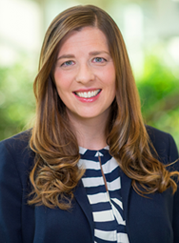
Rebecca Moffett
Rebecca's a longtime Vanguard Charitable employee with 10 years of experience with donor-advised funds. She oversees marketing, strategic planning, and team management. Focused on building awareness of the benefits of strategic philanthropy, Rebecca is committed to improving donors' giving experiences.
How can I listen?
You can listen to The Value in Giving wherever you get your podcasts! Links for each episode are provided for popular platforms like Apple, Anchor, Spotify, and Google podcasts.
How can I support?
You can subscribe to The Value in Giving on the platform of your choice, leave a review, and share with a friend!

